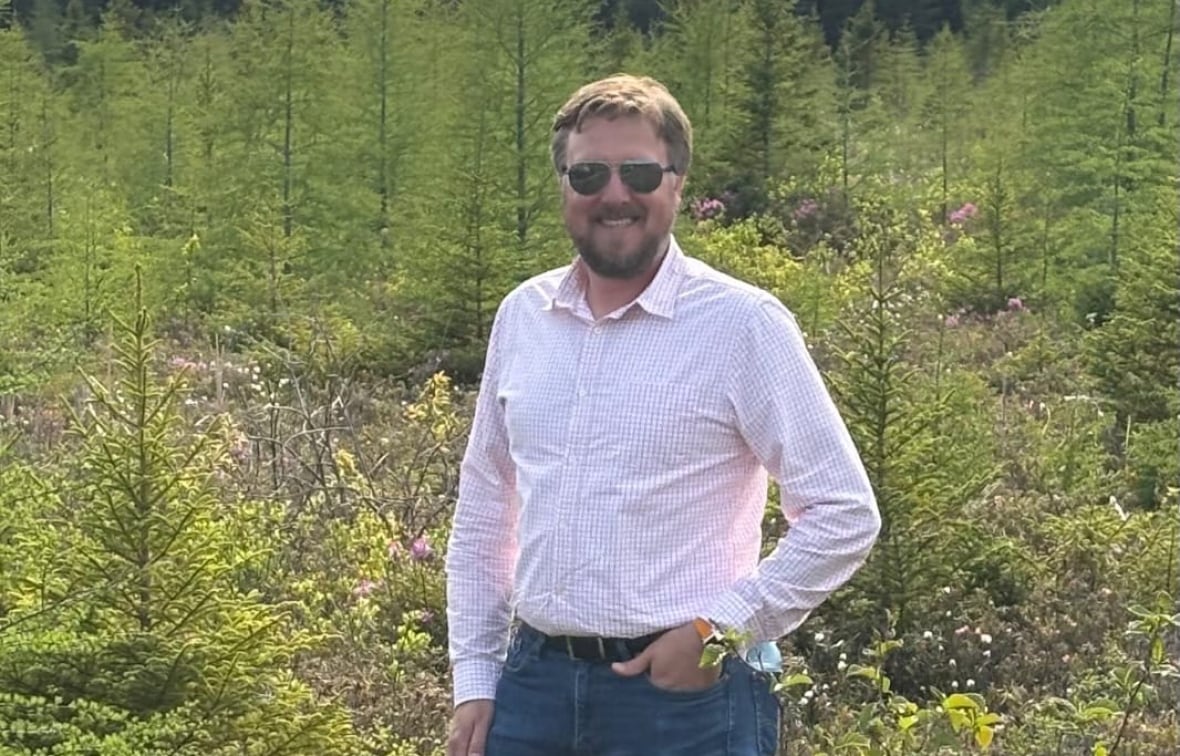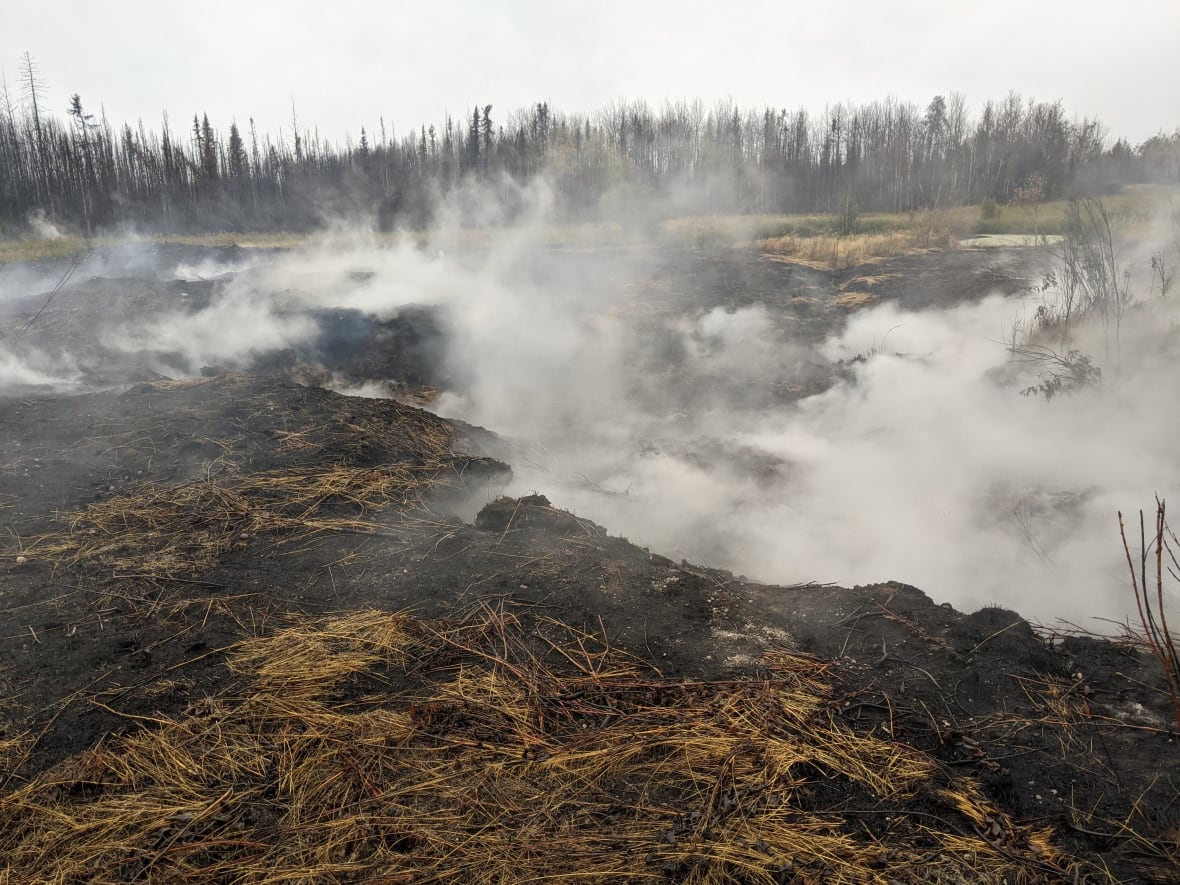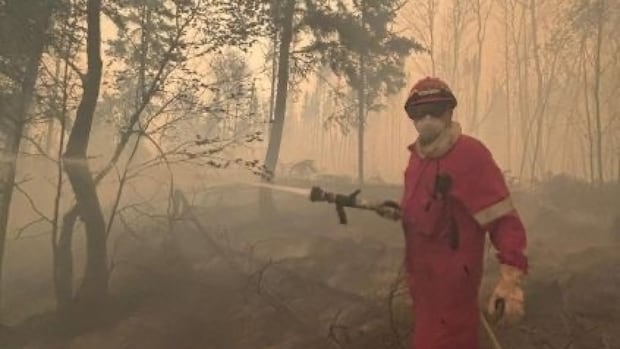[
Wildfire smoke in Manitoba could be even more toxic than usual and more research needs to be done on the pollutants being released into the air, according to scientists.
The fires may be releasing pollution stored in the province’s soil for millennia, including toxic chemicals from more than a century of resource exploitation in the north, said Colin McCarter, Canada Research Chair of Climate and Environmental Change.
Peatlands cover about one-third of the province and the boggy wetland is a critical carbon storehouse and even acts as a natural fire barrier, but climate change is increasingly putting them at risk.
As the landscapes dry out and become more susceptible to the flames, a “pollution time bomb” is potentially set to go off, McCarter said.
Peatlands are “also regionally really important landscape stores or sinks of toxic metals,” he said. “Toxic metals can range from everyday things that we think about [like] copper … [to] lead, arsenic, mercury — all these things that are associated with quite poor human health outcomes.”
McCarter said peatlands are able to sequester more of these toxic metals than other ecosystems, and that it’s easy to find peatland-rich areas in Canada which are near places where there’s been historical industrial activity and resource extraction, including Flin Flon.

A fire that forced the evacuation of the city about 760 kilometres northwest of Winnipeg, in late May was about 347,105 hectares large this week, making it the biggest active wildfire in the province.
The community’s last mine closed in 2022. Its copper-zinc smelter — which had been operating since the 1920s — shut down in 2010.
At one point, the Flin Flon smelter emitted more than 200,000 tonnes of sulfur-dioxide a year. Studies done over the past three decades have found elevated levels of mercury and other trace metals in sediment cores, soil humus, plants and peat.
Environment and Climate Change Canada said that while it was operational, the smelter was the largest single source of atmospheric mercury emissions in the country.

“I can name probably half a dozen other sites across Canada where you have this kind of … landscape-level pollution from this historical industrial contamination in the boreal, which is a fire ecosystem,” McCarter said, mentioning Thompson which is about 15 kilometres southwest of another wildfire.
“It’s a fire-adapted ecosystem and … normally burns.”
But McCarter said the level of toxicity of what may be released depends on several factors, including the temperature of the fire, the type of peatland and climate conditions.
“Trying to make that link there … from what’s in the peatlands to what is the risk is still a very active part of my research,” he said.
“We’re starting to put some of those ideas to experiments, but we’re still missing those linkages to really make these predictions about risk.”
‘We need studies’
Michael Schindler is a professor with the University of Manitoba’s department of earth sciences, and has previously done research on how pollutants mix with wildfire smoke.
“Contaminants at Flin Flon are mainly lead, zinc, mercury,” Schindler said, adding that selenium is an issue. The province limited consumption of fish at a nearby lake last year due to elevated selenium levels, which were likely a result of mine wastewater over the past century.
Schindler said contaminants that couldn’t normally be inhaled get attached to the finer particles in wildfire smoke, allowing them to get into the lungs.
The particles “are literally the Trojan horse,” he said. The smoke’s “health effects are much greater.”
Many of the metal particles released by a smelter are “pretty locked up,” Schindler said. “But some of them are already mobile and those could theoretically … be volatilized and attach, especially mercury which is a really volatile element. Selenium, also.”
Smoke from Canada’s wildfires spread across North America and even crossed the Atlantic Ocean this summer.
“It’s huge amounts of wildfire smoke and you get those metals coming in … but it will delude over a long distance,” Schindler said.
The professor said he’s more worried about the smoke mixing in with urban pollutants downstream, coming from sources like “literally every diesel engine.”
The toxic metals theoretically “may affect just the people in Flin Flon, but we need studies,” Schindler said.
“Is the population around Flin Flon more affected by the wildfire smoke in terms of health issues later on than a community where there has not been mining or smelting? I think people in Manitoba should know about this.”
Dave Price has lived in Flin Flon since the 1970s. A former geologist, he was among a group of volunteers who worked to rehabilitate land around the city that had been left barren because of increased acidity caused by the smelter’s emissions for more than a decade. The project wrapped up in 2016.
Price was among the 5,000 residents who were allowed to return to the community last month.
“It was a very hot fire as far as I understand it. That is to say, the trees were burned down to the roots and the burning continued into the peat underneath, and the peat underneath did contain these metals,” he said.
“That sort of situation needs to be monitored. Where’s the smoke coming from and what toxins are in it?”
